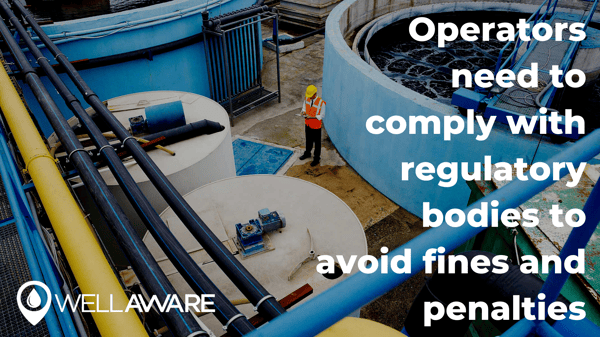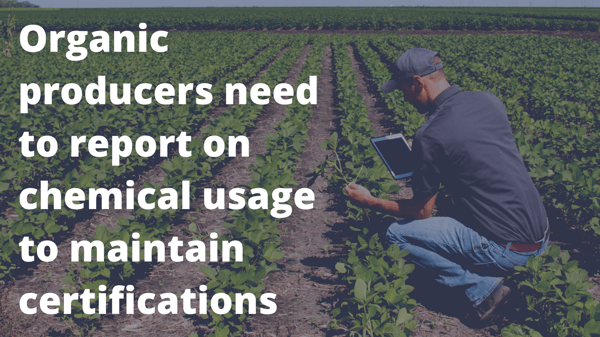
News, Insights, and more on Industrial IoT

Industrial chemicals play an instrumental role in helping organizations achieve both operational and business goals. However, chemicals are useful in another important way - they help leaders maintain regulatory compliance.
Operators must adhere to oversight that is designed to protect consumers, workers, and the environment. Doing so requires applying chemical treatment responsibly to protect critical infrastructure, prevent cross-contamination, and mitigate catastrophic public health risks. To this end, industrial teams need sophisticated chemical management capabilities, including automated data feeds, visibility into real-time asset integrity, and remote monitoring technology.
In this post, we cover how poor chemical treatment creates regulatory risk for industrial organizations. We also share a few strategies to help operators use the capabilities listed above to overcome common chemical management challenges and achieve their organization’s overarching objectives.
Since the industrial revolution, industrial chemicals have been a massive boon for all types of businesses. However, chemical utilization also comes with regulatory responsibility. Industrial organizations must be able to comply with stringent environmental and operational standards.
Regulatory bodies, like CalGEM in California, for example, exist to ensure producers implement procedures that minimize public health risk, prevent leaks or cross-contamination, and protect local environments. Under-injecting chemicals, such as corrosion, scale, and hydrate inhibitors, exposes underground infrastructure to harmful byproducts. Over-injecting chemicals can contribute to environmental problems and incur remediation costs for producers.
In 2012, the National Research Council published a report stating that 126,000 groundwater sites across the U.S. did not meet pollution standards due to contaminants created by underground storage tanks, industrial facilities, and military installations. The total estimated cost of remediation: $110B-$127B.

Chemicals used for quality assurance are closely regulated and require careful reporting. Those who can’t prove accurate chemical dosing are at risk of losing crucial certifications (e.g., organic labels). Over-treating crops, for example, can cause poor health and environmental outcomes. Under-applying disinfectants can cause outbreaks of illness and other public health crises.
According to the CDC, 1 in 6 people gets sick each year from contaminated foods or drinks. Overall, foodborne illnesses cost the country nearly $16B annually, along with thousands of lives.

As we can see, the consequences of poor chemical treatment are serious when it comes to compliance. To be successful on this front, organizations have to follow the rules and prove that they can, have, and will continue to operate according to regulatory guidance.
This is challenging because regulatory requirements change from state to state, which may also differ from federal mandates. In terms of chemical treatment, specifically, maintaining compliance means dosing within regulatory limits and accurately reporting on that activity.
Fortunately, there are tools and technologies out there that can help. With a solution like WellAware On Demand Chemical, operators can track chemical usage closely. Our platform monitors when chemicals are injected, where they are injected, how much was used to treat a particular asset. Regulatory reporting is much easier when you have this level of transparency and data quality.
As an example, some regulatory bodies require that all operators who inject water into underground reservoirs report on the type and quantity of the chemicals used to protect or improve the performance of injection wells. Without chemical monitoring and automation, keeping an accurate record of the chemical volumes injected across various locations would be a nightmare, especially when sites cross county lines. WellAware eliminates any complexity in this area.
Our platform also simplifies reporting significantly. WellAware On Demand Chemical can track chemical type, composition, and injection volumes for every location and package all of this data into pre-formatted reports. Users can easily download these reports monthly, quarterly, or annually depending on their region’s regulatory requirements and send them off for regulatory review.
WellAware even allows operators to automate report deliveries so that workers never have to pull data or generate reports manually. Users can configure the platform to send chemical reports automatically to regulatory agencies! On top of that, operators never have to worry about the integrity of the data being shared, so long as they set WellAware On Demand Chemical up to track chemical usage daily.
Today, our On Demand Chemical platform manages over 2,000 chemical injection systems across the globe. We use our industrial experience and data expertise to help chemical managers optimize our solution for their unique regulatory responsibilities.
To learn more about WellAware On Demand Chemical, visit wellaware.us/chemical.
Like what you're reading? Sign up for updates!
Have a Question?